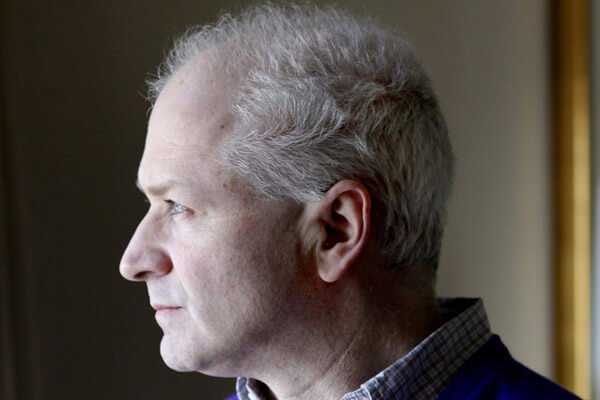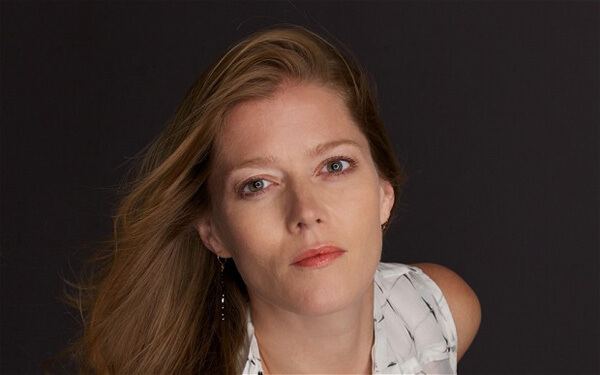 Written on Skin, the highly anticipated first full-length opera by British composer George Benjamin, with librettist Martin Crimp, presents a time-bending story of a medieval artist, the domineering lord who employs him, the lord’s wife who falls in love with him, and the gruesome tragedy that ensues – all told through the lens of the present. The story is straightforward, gripping, and dramatically suited to the opera house. Those familiar with Benjamin’s music will wonder how this most fastidious and articulate of composers would approach setting such a visceral and violent drama. As demonstrated in the opera’s London premiere at the Royal Opera House Covent Garden, 16-22 March 2013, Benjamin and his collaborators have crafted a deeply-affecting work of power and refinement. The performances all around – both vocalists and orchestra (conducted by Benjamin) – were superb. Soprano Barbara Hannigan, baritone Christopher Purves, and counter-tenor Bejun Mehta were all expressive and convincing characters who sang spectacularly.
Written on Skin, the highly anticipated first full-length opera by British composer George Benjamin, with librettist Martin Crimp, presents a time-bending story of a medieval artist, the domineering lord who employs him, the lord’s wife who falls in love with him, and the gruesome tragedy that ensues – all told through the lens of the present. The story is straightforward, gripping, and dramatically suited to the opera house. Those familiar with Benjamin’s music will wonder how this most fastidious and articulate of composers would approach setting such a visceral and violent drama. As demonstrated in the opera’s London premiere at the Royal Opera House Covent Garden, 16-22 March 2013, Benjamin and his collaborators have crafted a deeply-affecting work of power and refinement. The performances all around – both vocalists and orchestra (conducted by Benjamin) – were superb. Soprano Barbara Hannigan, baritone Christopher Purves, and counter-tenor Bejun Mehta were all expressive and convincing characters who sang spectacularly.

Composer George Benjamin (photo credit: Nimbus Records)
Written on Skin tells the story of a cruel, feudal landowner, The Protector (Purves), who commissions a young artist, The Boy (Mehta), to illuminate a manuscript celebrating the Protector’s life and good works. The Protector invites The Boy into his home, where is wife, Agnès (Hannigan), falls in love with The Boy and the two have an affair. The Protector discovers the affair when Agnès demands that The Boy reveal it in the pages of the book. The Protector kills The Boy and feeds his heart to Agnès, who then commits suicide rather than be slain by her jealous husband. The narrative is somewhat complicated by the interweaving of past and present times, with three angels (one of who is The Boy) who comment on the narrative from a modern perspective.
Librettist Crimp describes Written on Skin in the programme notes as a “hot story set within a cold frame,” and Benjamin approached his setting in very much this way. In his music, the ‘hot centre’ are the voices. They are virtually omnipresent in the opera, and often times appear to be singing with only the sparsest accompaniment from the orchestra. Benjamin knew the exact voices to be employed in the premiere production when he was writing the opera. This comes through clearly as the voices spread out over their full ranges, interweave perfectly in a number of stunning duets and trios, and come back time and again to their most colourful and expressive notes.

Duet between Agnès and The Boy. Written on Skin, Part I Scene IV.
Indeed, the voices are so clear throughout the opera that I am convinced the one moment when I noticed a truly inaudible voice was a powerful masterstroke. This occurred in Scene XIII (CHORUS OF ANGELS AND THE PROTECTOR). As The Protector decides what to do, one of the Angels says “be wise, be calm, be merciful.” On the word merciful a solo Horn rises up to forte and ensures the word falls unheard.
With these spectacular voices as the ‘hot centre’ of the music, then, the ‘cold frame’ of the work is the music played by the orchestra. Though repeated listening could prove me wrong, I doubt there is a single wasted note in Benjamin’s colourful and imaginative score. The orchestration calls for a chamber-sized string choir (8 first violins, 6 second violins, 6 violas, 6 cellos, 4 basses) and uses less common instruments such as glass harmonica and viola da gamba. There are passages in the score so beautiful and highly characterised that they have stayed vivid in my memory since I saw and heard them.

Soprano Barbara Hannigan (photo credit: concertgebouw.nl)
Yet Benjamin’s decision to strip the accompaniment down so far did, at times, make it feel that the voices and drama had been abandoned by the orchestra. Written on Skin has been labelled by some as a feminist opera, yet the orchestra is particularly objective and withdrawn in relation to its heroine, Agnès. For example, in scene VIII (THE PROTECTOR AND AGNÈS) Agnès makes sexual advances toward her husband, is rebuffed and called a child, and responds by revealing her affair with The Boy.
As Agnès begins her advance, the strings are divided down to every desk into a hugely colourful but also quite thin and un-seductive texture. “Kiss me. Yes. Kiss me” Agnès sings, accompanied by small groups of solo strings marked sul tasto and ppp. As The Protector insults Agnès (“Only a child, Agnès, asks for a kiss”), the pace quickens (“Fast, tense” 104 bpm) but the harmon-muted brass and pp winds leave her growing anger unsupported by the music. It is as if we are observing a woman we hardly know get angry, as opposed to feeling the anger ourselves. Moments later, when Agnès reveals her affair with The Boy (“Go to the wood. Ask him-“) the orchestra explodes with The Protector in open ff brass, running wind crescendos, and rhythmic and intense writing in the strings.
It depends on your sensibility, then, as to whether Written on Skin will strike you as incredibly refined or rather infuriatingly restrained. My own response included moments of both, but the overall reflection has been on a work that resonated deeply with me in both its music and drama, and one that affirmed both the urgent necessity and the vast possibilities of bringing the best composers of our time to the opera house.
If you do not yet know George Benjamin’s music, I cannot recommend him highly enough, and suggest beginning with At First Light and Palimpsest. Tom Service has also written a short guide to George Benjamin’s music in The Guardian’ series on contemporary composers. The world premiere of Written on Skin at the 2012 Festival ‘Aix en Provence was recorded for a CD on Nimbus Records and the Convent Garden production will be available on a forthcoming DVD. Additional performances of Written on Skin are scheduled in Vienna (14, 16, 17 June 2013) and Munich (23,25,27 July 2013).
–
Aaron Holloway-Nahum is a composer, conductor, recording engineer & graphic designer living and working in London. He is currently writing an orchestral piece for the BBC Symphony Orchestra and is the artistic director of The Riot Ensemble. Follow him on Twitter @AaronHNahum.





















